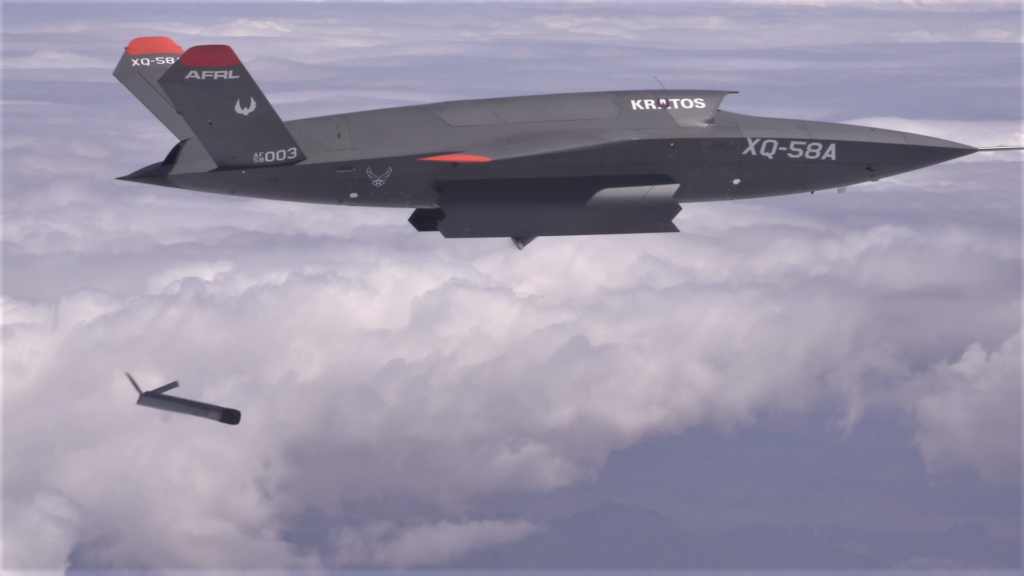
The U.S. Air Force is working to develop drone fighters. Most recent test flight had the drone launch another drone.
All the original manufacturers for every component of the Minuteman ICBM system are either gone or the assembly lines have long since been shut down. That means USAF is using its own production facility to create the myriad of necessary spare parts.
4/6/21 – New Atlas – Valkyrie combat drone launches another drone during test flight – Imagine a drone fighter that accompanies a cutting-edge manned fighter such as an F-35. The escorting drone could carry a heavy load of bombs to multiply the strike power of a fighter. It could carry an assortment of air-to-air missiles to defend against other planes or air-to-ground missiles to strike radar or other defense assets.
Imagine a swarm of fighters consisting of one crewed F-35 and multiple strike drones, with the drones having high maneuverability, an assortment of weaponry, stealth technology, and sophisticated artificial intelligence.
Imagine no more. You can picture the XQ-58A Valkyrie. Photo above.
There have been six test flights of the Valkyrie drone.
On its latest test it launched a small drone. The Altius-600 weighs in at a mere 27 pounds with range of 276 miles and endurance of four hours.
The Valkyrie is a test bed to explore the ability of combat drones to act as escorts, or serve as surveillance vehicle, or an attack platform, operating either as part of a swarm or independently. Incredible.
3/29/21 – McClatchy – US nuclear weapons are aging quickly. With few spare parts, how long can the last? – All the companies that made the humongous number of miscellaneous parts needed to operate a nuclear launch system have either gone away or long since shut down their production lines. Therefore the original manufacturers cannot produce any spare parts.
The parts inventory is getting thin. Article provides an example of one LCC at Minot Air Force Base. The elevator taking the crew, supplies, and maintenance teams 100 feet below the ground had one of the myriad parts break. The elevator was out of commission with no spare parts in the entire Air Force. The maintainers, applying their brilliance and creativity as usual, developed a workaround for several months until replacement part could be fabricated.
All the parts needed to operate the missiles, launch facilities (where the missiles are), and launch control centers (with a launch crew sits) are manufactured in one plant in Kansas City.
Concentration of all manufacturing in one facility is needed to maintain the extremely high quality necessary.
Illustration offered in the article is possibility of a wire somewhere in the system degrading in a few years instead of a few decades.
Imagine the wire from one of the launch switches fails. The launch vote would not be recognized by the computer in the capsule and would then not be transmitted to the missiles. Since the launch switch is never used (fortunately) or tested, the failure would remain unknown.
Result would be a launch might fail even though there is absolutely no warning sign that one of hundreds of critical wires had failed.